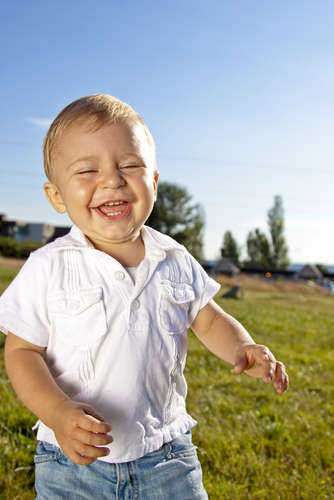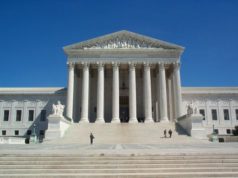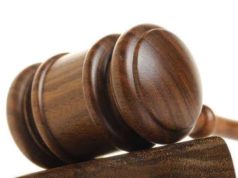
The concept of children’s rights has been a topic of legal and social discussion for several decades, with many countries enacting laws and policies to protect the rights of children. In the United States, the Supreme Court has played a crucial role in advancing the cause of children’s rights, hearing cases that have had a significant impact on the treatment of children in American society. In this article, we will examine the issue of children’s rights in the Supreme Court, looking at some examples of cases in which these rights were shown.
Brown v. Board of Education (1954)
While not solely focused on children’s rights, the landmark Supreme Court case Brown v. Board of Education had far-reaching implications for them. It ruled that racial segregation in public schools was unconstitutional, and its principles of equal protection under the law and racial desegregation were applicable to all individuals, including children. This decision represented a significant step forward in advancing civil rights for all children in the United States.
Gideon v. Wainwright (1963)
Another significant Supreme Court case related to children’s rights is Gideon v. Wainwright. This 1963 case dealt with the issue of legal representation for
criminal defendants and established the principle that all defendants have the right to counsel, regardless of their ability to pay. This decision had a significant impact on children who were charged with crimes, ensuring that they had access to legal representation in criminal proceedings.
In re Gault (1967)
In re Gault was a landmark Supreme Court case that addressed the rights of children in criminal proceedings. In this case, a 15-year-old boy was sentenced to a juvenile detention center without due process of the law. The Supreme Court held that children in juvenile court proceedings have the right to due process of law, including the right to counsel, the right to notice of charges, and the right to cross-examine witnesses.
New Jersey v. T.L.O. (1985)
New Jersey v. T.L.O. was a Supreme Court case that dealt with the rights of students in public schools. In this case, a school administrator searched a student’s purse and found evidence of illegal drug activity. The Supreme Court held that while students do not have the same
Fourth Amendment protections against unreasonable search and seizure that adults do, they still have a reasonable expectation of privacy in certain circumstances. This decision had significant implications for how schools can search students’ property and balanced students’ rights with school authority to maintain safety and order.
Conclusion
The Supreme Court has played an important role in advancing the cause of children’s rights in the United States, hearing cases that have had a significant impact on the treatment of children in society. The cases discussed above represent just a few examples of the Court’s involvement in this area. Through its decisions, the Supreme Court has helped to shape the legal and social landscape for children in the United States, ensuring that their rights are protected and that they are treated with dignity and respect. It is the ongoing responsibility of the Court to continue this work and to ensure that the rights and interests of children remain a priority in American society.
Federal courts have battled with a myriad of concerns upon determining definitive legislative statutes in which to encompass both the rights, as well as the parameters, of minors. The subject of children’s rights is one of glaring complexity due to the obligation of the Supreme Court to protect the rights and interests of the citizens that it serves. Children’s rights activists have asserted that from a sociological standpoint, children – minors who cannot be tried as adults in Federal courts – simply cannot be held to the same legal or moral standards of their adult counterparts.
However, there exist instances in which Federal courts have found certain crimes committed by minors to be so egregious and methodical, Justices of ruling in those Supreme Courts have motioned for minors to be tried as adults. Yet, despite these isolated incidents, Federal courts have established a three-tier labeling process in which to quantify children convicted of crimes.
Delinquents are considered to be children who have committed crimes whose convictions are contingent on the fact that the minor cannot be punished as an adult. Should an adult have committed a similar crime, they would be punished according to Federal court legislation. However, due to a child’s status as a minor, they are afforded extenuating circumstances, such as the option of juvenile detention instead of prison.
Neglected or abused children are minors who have sustained some degree of abuse – emotional or physical – over the course of their upbringing. Federal courts treat crimes committed by abused or neglected children on a case-by-case basis, taking into consideration the abusive environment assumed to contribute to the crime committed. Children in need are considered to be children requiring complete rehabilitation – both physical or emotional. In 1965, a 15 year old high school student named John Tinker and his sister Mary Beth donned black armbands to their high school as a form of protest against the Vietnam War.
In response, they were both suspended from high school, an action that the Tinkers found to be in direct violation of their constitutional rights, namely, those expressed in the First Amendment. The Tinkers presented their case in front of the U.S. Supreme Court and were awarded the decision due to the fact that their protest was neither violent nor disruptive. The Tinkers were well within their legal rights to express themselves in that fashion. Children who have committed crimes are brought before juvenile courts instead of Federal courts. However, should the presiding judge of the juvenile court feel that a particular crime committed by a child, regardless the child’s status as a minor, is so heinous in nature the Federal court judge has the option to motion that the child in question be tried as an adult.



























